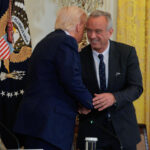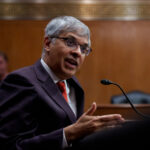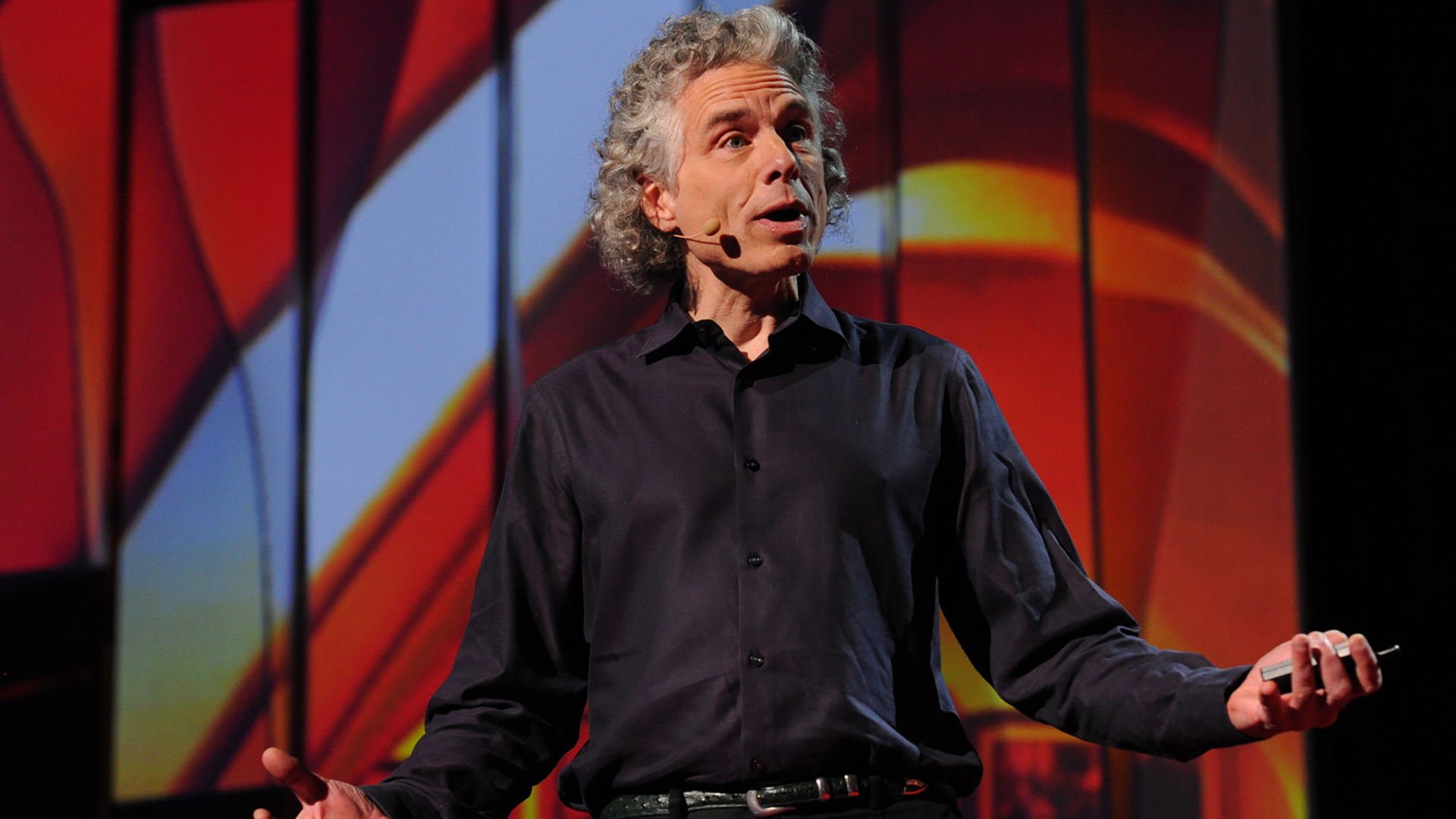Five Questions for Steven Pinker
The Undark Five — that would be five questions that we put to researchers who are influential, provocative, sometimes controversial — premiers this month with Harvard University psychologist Steven Pinker.
Pinker is the Johnstone Family Professor in the Department of Psychology, where he conducts research on language and cognition. He is the author of ten books, including the recent bestsellers “The Better Angels of Our Nature” and “The Sense of Style: The Thinking Person’s Guide to Writing in the 21st Century.” He is a recognized expert in the development of language and linguistics.
As such, Pinker is also a scientist who is demonstrably adept at communicating about science, conveying complex ideas directly to the public, not only through his books but as a public speaker, magazine author, and prolific user of Twitter. From that perspective, he has often looked critically at the way journalists distill and interpret science on behalf of the public — a topic on which he has strong opinions.
Naturally, we queried Pinker on that issue — and much more. Our Undark Five, conducted via email, appears below.
Undark — In “The Better Angels of Our Nature,” you describe journalism as “a systematically misleading way to understand the world.” What led you to that conclusion and why, given your position, do you still speak to journalists?
Steven Pinker — Journalism is about things that happen, often the unusual and dramatic ones. These events stick in the mind, and because of a feature of our psychology that Daniel Kahneman and Amos Tversky dubbed “the availability heuristic,” they affect people’s assessment of risk: The easier it is to remember an example of something, the more probable people think it is. So people fear the kinds of threats that make the news — shark attacks, plane crashes, terrorism — when they should fear boring but more likely risks like accidental poisoning, falling off a ladder, and texting while driving.
In the case of violence, you never see a reporter with a microphone and a sound truck in front of a high school announcing that the school has not been shot up today, or in an African capital noting that a civil war has not erupted. In Better Angels I presented data showing that most measures of violence have declined over time. But as long as the rate of violence hasn’t fallen to zero, there will always be enough incidents to fill the news, and people’s intuitions will be disconnected from reality.
Of course I can criticize an aspect of journalistic culture while still speaking to, indeed admiring, journalists! Without journalists, how would we know anything about the world beyond our petty little circle of acquaintance? What I would like to see is more statistical and historical context in the background paragraphs of a news story (if it’s a matter of space, editors could always by deleting those inane vox-pop quotes). All the more so in the accompanying analysis pieces and in op-ed columns — there should be a law against any pundit noting that X happened yesterday and then concluding that X is increasing. We are blessed with many government agencies, think tanks, NGOs, and academic centers that tabulate data over time. Perhaps their annual findings on trends, suitably sexed up, could be the subject of news stories.
I have a related concern about science journalism, which I think also has too much coverage of one-off studies (which are often, we now know, unreplicable or misleading, as in the carcinogen- or healthy-food-du-jour stories), and too little coverage of meta-analyses and literature reviews, where more robust conclusions are drawn.
UD — On the theme of language, in your book, “The Sense of Style,” you said that – despite common belief – you don’t think our language skills are declining. But in an age of 140-character Tweets and ubiquitous autocorrect, how can this be true?
SP — Twitter would be a threat to the language only if a Supreme Leader forced us to communicate only in Tweets. In reality we write in a variety of formats varying in length, formality, and permanence. Competent writers tailor their language to the demands of the medium. It’s an error to dictate a formal letter on someone’s voice mail, and it’s also an error to use breezy, mispunctuated slang in the inscription on a genocide monument. Though there’s lots of electronic dreck out there, particularly in comment sections, there is also an avalanche of good writing in many on-line magazines, blogs, journals, and reviews. When was the last time you heard someone complain that they had to get back to work because there’s nothing to read on the Web?
UD — On Twitter earlier this month, you wrote that “all words have [more than] one meaning” and also that “mature adults resist taking pointless offense.” We wonder about the word “all” here. How do you square that, for example, with unambiguous, sexually or racially derogative words?
SP — Actually, it’s not easy to find words that are unambiguously derogatory; it always depends on the context. The most offensive word in contemporary English is “nigger”(from negro, Spanish for “black”), but it was far less incendiary in the antebellum South. … And today the term is famously used in a teasing or affectionate manner among African Americans, as if to say “We’re so intimate that we can call each other offensive names without taking offense.” “Queer,” “dyke,” and “bitch” have also been appropriated by their original targets, and there is a magazine for hip young Jews called Heeb.
Of course the speaker and tone are everything. In the movie “Rush Hour,” Jackie Chan plays a Hong Kong detective who innocently follows the lead of his African-American partner and greets the black patrons of a Los Angeles bar with “Wassup, my nigger!” A small riot breaks out.
Even putting aside these consciously defiant acts of reclaiming, most taboo words have, or had, non-taboo senses. Many racist and misogynistic terms started out as metonyms, in which people were demeaningly referred to by a body part or feature (“slant,” “redskin,” “wetback,” “skirt,” “broad”). Many taboo sexual terms have prosaic homonyms, like “cock,” “prick,” “pussy,” “booty,” and “ass” — though in a linguistic version of Gresham’s Law, the taboo senses tend to drive out the polite ones, and those words are decreasingly used with their original meanings.
And then there are regional and generational differences. After “nigger,” the most offensive word in American English today is “cunt.” But in Britain it’s less misogynistic and is used more like our “idiot” or “jerk.” And that may be spreading to younger Americans — I was shocked to hear [the standup comedian] Louis CK use it in that sense in one of his monologues.
None of this means that we should be indifferent to racist, misogynistic, or homophobic language. In context, some usages are obviously meant to demean or intimidate, and editors and other gatekeepers and tone-setters have good reasons to regulate them in the forums they control.
UD — Returning to “The Better Angels of Our Nature,” you say in the preface that in the present day we are “blessed by unprecedented levels of peaceful coexistence.” Not everyone has embraced this notion, including some critics who argue that “peaceful coexistence” has less to do with morality than fear of nuclear weapons, for instance. Others point to the epidemic of gun violence in America, or the increasingly xenophobic rhetoric on this year’s presidential campaign trail, as evidence that the sort of civilized progress you evoke is a fiction. What is your response to such critiques?
SP — First, the question of whether we coexist peacefully is separate from the question why we do. If people stop killing, beating, and raping each other for non-moralistic reasons, that’s still better than if they were to continue.
In any case, nuclear weapons can’t explain the decline in homicide — it’s not as if young toughs threaten each other with nukes — nor the declines in rape, domestic violence, capital punishment, bullying, and child abuse. Nor can it explain institutionalized changes such as the abolition of torture, executions, corporal punishment, slavery, and the criminalization of homosexuality.
Even in the arena of international relations, the theory of the nuclear peace is implausible. Non-nuclear nations also don’t fight each other (Canada and Spain did not to go to war over their flatfish dispute, even though neither feared being nuked by the other), and when wars have broken out, it’s often a non-nuclear state that starts a war against a nuclear one: Argentina provoked Britain in the Falklands, Egypt invaded Israel-held Sinai, China was defied by Vietnam, the Soviet Union by Afghan rebels, and the United States by North Vietnam, Iran, Iraq, Panama, and Yugoslavia. In each case the invading or defying force knew that a nuclear response would be so disproportionate and unthinkably destructive that it was effectively a bluff. So the explanation for the reduction in wars and war deaths has to lie elsewhere.
Within the United States, an “epidemic of gun violence” is irrelevant to whether violence has declined. There has been an epidemic of gun violence in the United States for centuries; the question is how it has changed over time. A decline is not a disappearance, and I’m continually surprised by the “critics” who don’t seem to grasp the arithmetic point that “t1 < t2” has a different meaning from “t1 = 0.” In the past 25 years, the homicide rate in the United States has plunged by sixty percent. It hasn’t fallen to zero, and never will, but a reduction of that magnitude means that hundreds of thousands of people get to live out their lives who would [otherwise] be in their graves if the rate had stayed the same.
As for the xenophobic rhetoric — well, let’s keep things in perspective. This spring we have one candidate who has proposed excluding certain ethnic groups from immigrating to the country. That’s repugnant, but it has zero chance of being implemented, and it’s hardly the worst the country has seen. In 1968 we had a presidential candidate, George Wallace, who, when he was sworn in as Governor of Alabama five years earlier, declared, “Segregation today, Segregation tomorrow, Segregation forever!” (to say nothing of his genocidal running mate Curtis Lemay), and he won five states and 13.5 percent of the popular vote.
One liberal hero, Franklin Roosevelt, forced Japanese-Americans into internment camps; another, Woodrow Wilson, purged African Americans from the government. The previous century had slavery, Indian wars, the Trail of Tears, frequent deadly ethnic riots, and lynchings at a rate of three a week. And that’s just America; the rest of the world, in various centuries, indulged in crusades, inquisitions, colonial conquests, pogroms, and a Holocaust. So while I revile The Donald as much as the next reader of Undark, he hasn’t undone the progress that the country or world has seen (at least not yet).
UD — You’ve done some bright and beautiful photography (as posted on your website). Do you do that just for fun, or does it tell you something about the differences between verbal and visual storytelling?
SP — Mainly for fun — I like to divert my full concentration to something other than ongoing work with all its anxieties. And photography allows me to savor moments of beauty not just as they unfold but for years afterward. Still, I can never turn off my psychologist’s inner monologue, and as I frame and snap, I find myself pondering the perception of color, light, and perspective, and the aesthetics of natural scenes, living things, and human faces.










